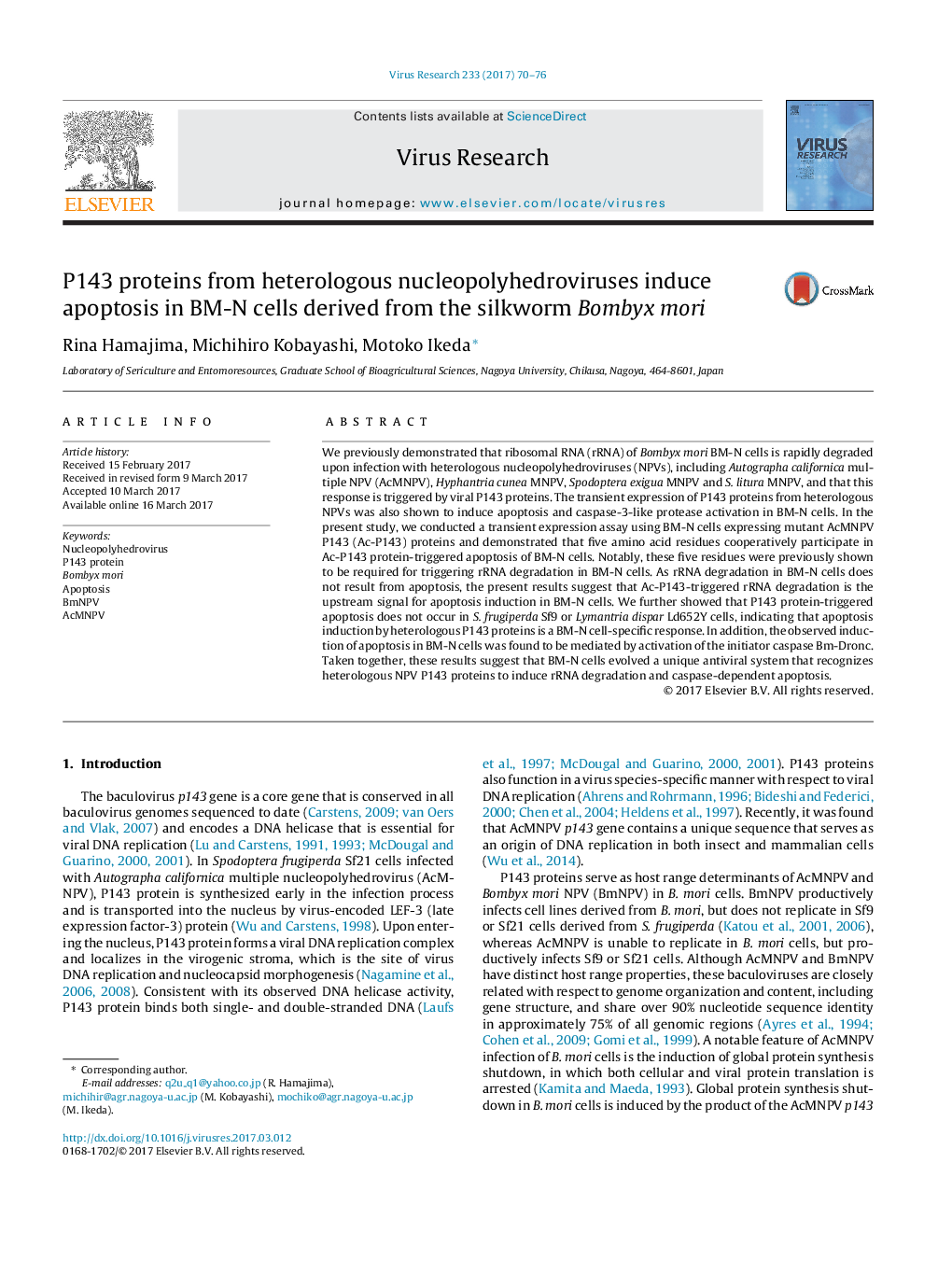| Article ID | Journal | Published Year | Pages | File Type |
|---|---|---|---|---|
| 5675543 | Virus Research | 2017 | 7 Pages |
Abstract
We previously demonstrated that ribosomal RNA (rRNA) of Bombyx mori BM-N cells is rapidly degraded upon infection with heterologous nucleopolyhedroviruses (NPVs), including Autographa californica multiple NPV (AcMNPV), Hyphantria cunea MNPV, Spodoptera exigua MNPV and S. litura MNPV, and that this response is triggered by viral P143 proteins. The transient expression of P143 proteins from heterologous NPVs was also shown to induce apoptosis and caspase-3-like protease activation in BM-N cells. In the present study, we conducted a transient expression assay using BM-N cells expressing mutant AcMNPV P143 (Ac-P143) proteins and demonstrated that five amino acid residues cooperatively participate in Ac-P143 protein-triggered apoptosis of BM-N cells. Notably, these five residues were previously shown to be required for triggering rRNA degradation in BM-N cells. As rRNA degradation in BM-N cells does not result from apoptosis, the present results suggest that Ac-P143-triggered rRNA degradation is the upstream signal for apoptosis induction in BM-N cells. We further showed that P143 protein-triggered apoptosis does not occur in S. frugiperda Sf9 or Lymantria dispar Ld652Y cells, indicating that apoptosis induction by heterologous P143 proteins is a BM-N cell-specific response. In addition, the observed induction of apoptosis in BM-N cells was found to be mediated by activation of the initiator caspase Bm-Dronc. Taken together, these results suggest that BM-N cells evolved a unique antiviral system that recognizes heterologous NPV P143 proteins to induce rRNA degradation and caspase-dependent apoptosis.
Related Topics
Life Sciences
Immunology and Microbiology
Virology
Authors
Rina Hamajima, Michihiro Kobayashi, Motoko Ikeda,
